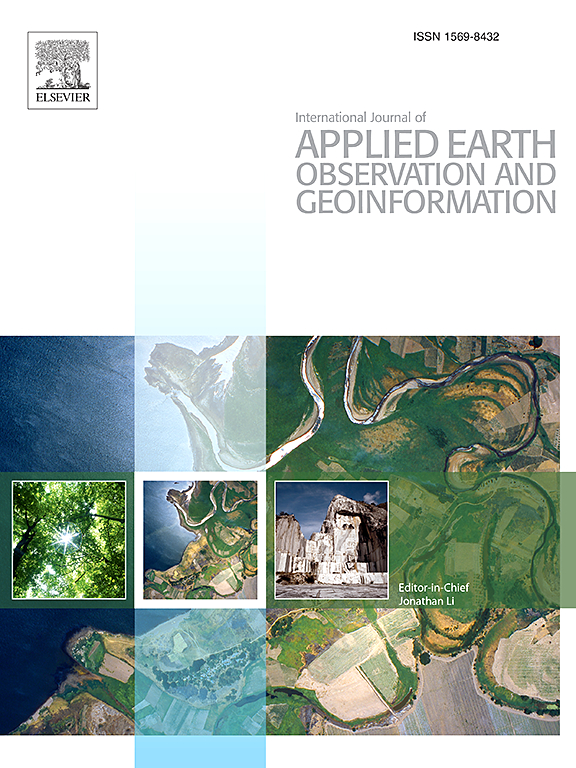OptiViewNeRF:在神经辐射场中通过批量视图选择和场景不确定性优化3D重建
IF 7.6
Q1 REMOTE SENSING
International journal of applied earth observation and geoinformation : ITC journal
Pub Date : 2025-02-01
DOI:10.1016/j.jag.2024.104306
引用次数: 0
摘要
在摆姿势图像数量有限的情况下,选择最合适的视点对于准确的神经辐射场(NeRF)建模至关重要。当前的视图选择方法通常依赖于启发式方法或计算密集型方法。为了应对这些挑战,我们引入了一个新的框架,OptiViewNeRF,它利用场景的不确定性来指导视图选择过程。首先,在初步NeRF模型的基础上,建立了整个场景的不确定性估计模型。然后,该模型使用批处理视图选择策略通知新感知视点的选择,从而允许在单个迭代中完成整个过程。通过选择提供信息数据的视点,该方法改进了新的视图合成结果,并准确地重建了3D场景。在两个选定的数据集上的实验结果表明,该方法有效地识别了信息视角,与基线和当前的方法相比,产生了更准确的场景重建。本文章由计算机程序翻译,如有差异,请以英文原文为准。
OptiViewNeRF: Optimizing 3D reconstruction via batch view selection and scene uncertainty in Neural Radiance Fields
In situations with a limited number of posed images, choosing the most suitable viewpoints becomes crucial for accurate Neural Radiance Fields (NeRF) modeling. Current approaches for view selection often rely on heuristic methods or are computationally intensive. To address these challenges, we introduce a new framework, OptiViewNeRF, which leverages scene uncertainty to guide the view selection process. Initially, an uncertainty estimation model of the entire scene is developed based on a preliminary NeRF model. This model then informs the selection of new perception viewpoints using a batch view selection strategy, allowing the entire process to be completed in a single iteration. By selecting viewpoints that provide informative data, this approach improves novel view synthesis results and accurately reconstructs 3D scenes. Experimental results on two selected datasets show that the proposed method effectively identifies informative viewpoints, resulting in more accurate scene reconstructions compared to baseline and state-of-the-art methods.
求助全文
通过发布文献求助,成功后即可免费获取论文全文。
去求助
来源期刊

International journal of applied earth observation and geoinformation : ITC journal
Global and Planetary Change, Management, Monitoring, Policy and Law, Earth-Surface Processes, Computers in Earth Sciences
CiteScore
12.00
自引率
0.00%
发文量
0
审稿时长
77 days
期刊介绍:
The International Journal of Applied Earth Observation and Geoinformation publishes original papers that utilize earth observation data for natural resource and environmental inventory and management. These data primarily originate from remote sensing platforms, including satellites and aircraft, supplemented by surface and subsurface measurements. Addressing natural resources such as forests, agricultural land, soils, and water, as well as environmental concerns like biodiversity, land degradation, and hazards, the journal explores conceptual and data-driven approaches. It covers geoinformation themes like capturing, databasing, visualization, interpretation, data quality, and spatial uncertainty.
 求助内容:
求助内容: 应助结果提醒方式:
应助结果提醒方式:


